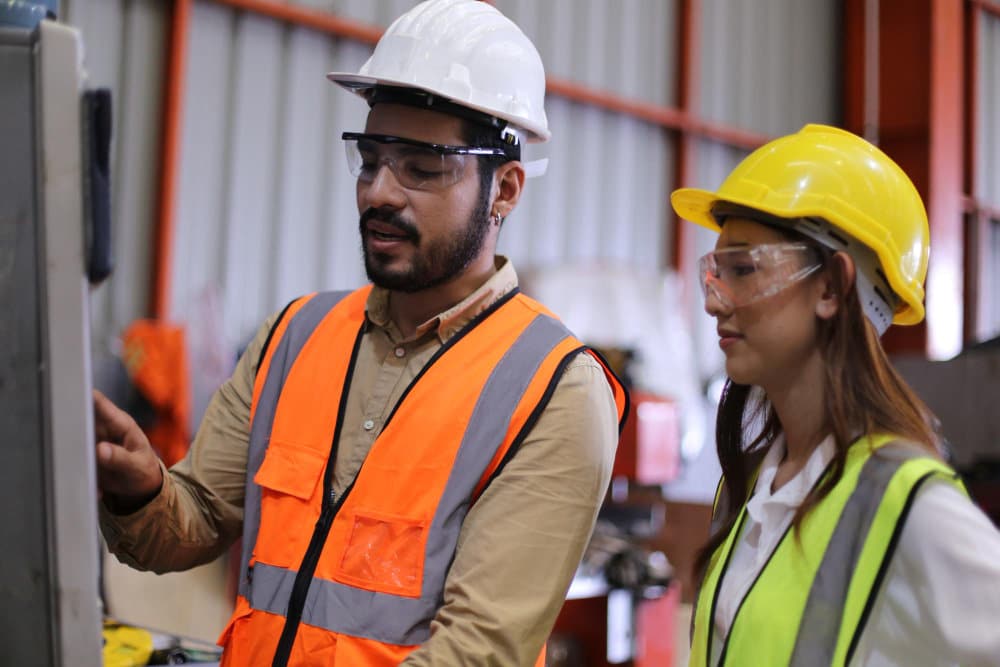Technology has been revolutionizing various industries, and the construction sector is no exception. From enhanced efficiency and precision to automation and robotics, technological advancements are reshaping the way construction projects are planned and executed. In this blog, we will explore how technology is reinventing construction practices and the implications it has for the industry.
Enhanced Efficiency and Precision
One of the key ways in which technology is transforming construction practices is through enhanced efficiency and precision. Traditional construction methods often relied on manual processes and 2D drawings, leading to potential errors and delays. However, with technologies like Building Information Modeling (BIM) and 3D printing, construction professionals now have powerful tools at their disposal.
BIM enables the creation of detailed digital models that encompass the entire project, including architectural plans, structural systems, and mechanical elements. This allows for improved collaboration among stakeholders, as everyone can visualize the project in a virtual environment. Additionally, BIM aids in better cost estimation, clash detection, and efficient project management. By identifying conflicts and issues beforehand, costly mistakes during the construction phase can be minimized.
Another technology that is revolutionizing construction practices is virtual reality (VR) and augmented reality (AR). These immersive technologies allow project teams to experience the design in a realistic and interactive manner. Architects and designers can use VR to walk through the building, making adjustments to the layout or materials as needed. AR can be used on-site to overlay digital models onto the physical environment, aiding in the accurate positioning of elements during construction.
Furthermore, drones have become a game-changer in the construction industry. They are extensively used for site surveys, inspections, and monitoring of construction progress. Drones can quickly capture aerial images and generate accurate topographic maps, aiding in better site planning and identification of potential challenges. They also provide real-time updates on construction progress, enabling project managers to make informed decisions and maintain schedules effectively.
Safety and Risk Management
Safety is a paramount concern in the construction industry, and technology is playing a vital role in improving safety measures and risk management. Wearable devices equipped with sensors are increasingly being used to monitor worker health and prevent accidents. These devices can track vital signs, detect fatigue or dehydration, and even alert workers to potential dangers. In case of emergency, these wearables can quickly send distress signals, enabling prompt assistance.
Accumulation of dust particles can lead to deflagration, flash fires, or even dangerous explosions. To ensure safety and prevent accidents, it is essential to implement proper safety measures when operating industrial dust extractors and collectors. Some key tips for safe operation include equipping the system with deflagration protection, protecting the ductwork, avoiding the accumulation of dust in the hoppers, using pulse-cleaning controls, and complying with safety inspections and certifications.
Additionally, artificial intelligence (AI) and machine learning algorithms are being employed to analyze data collected from various sources, including wearable devices and sensors. By spotting patterns and trends, AI-powered software can identify potential hazards and mitigate risks before accidents occur. For instance, if a construction site is prone to slips and falls, AI can analyze historical data and suggest preventive measures, such as improved signage or additional safety barriers.
Furthermore, drones equipped with thermal imaging cameras can be used for site inspections, identifying areas of heat loss, electrical faults, or structural weaknesses. This enables proactive maintenance and reduces the likelihood of accidents caused by faulty infrastructure.
Automation and Robotics
Automation and robotics are transforming the construction landscape by streamlining processes and reducing reliance on manual labor. Autonomous construction equipment and machinery, for instance, are significantly increasing productivity and efficiency on construction sites. These machines can perform tasks such as excavation, grading, and material transportation with minimal human intervention. By automating these labor-intensive tasks, construction companies can save time, reduce costs, and improve overall project quality.
Moreover, robotics technologies are making their way into construction practices. For example, robotic bricklaying systems can autonomously lay bricks at a much faster pace than human workers, resulting in increased productivity. Similarly, robots are being used for concrete pouring, ensuring precise and consistent results. Demolition robots are also gaining popularity, as they can efficiently dismantle structures without endangering human lives.
The implementation of automation and robotics not only boosts efficiency but also addresses labor shortages and safety concerns. With these technologies taking over repetitive and hazardous tasks, workers can focus on more skilled and complex activities, improving job satisfaction. Construction sites are inherently risky environments, and by leveraging automation and robotics, the industry aims to reduce accidents and injuries significantly.
Sustainability and Green Construction
As the world becomes more environmentally conscious, sustainability has become a crucial aspect of construction practices. Technology is propelling the industry towards greener and more sustainable solutions. Renewable energy sources are being integrated into buildings, reducing reliance on fossil fuels. Solar panels, wind turbines, and geothermal systems are now common features in sustainable construction projects.
Smart buildings, equipped with sensors and IoT devices, optimize resource usage and energy consumption. These buildings can automatically adjust lighting and temperature based on occupancy, reducing energy waste. They can also monitor water usage, detect leaks, and manage waste more efficiently.
Green materials and construction techniques are also gaining traction. Recycled and eco-friendly materials, such as reclaimed wood or recycled concrete, are being used to reduce the environmental impact of construction. Prefabrication and modular construction methods minimize waste generation and improve construction efficiency.
In conclusion, technology is reshaping the construction industry in profound ways. Enhanced efficiency and precision, automation and robotics, safety and risk management, sustainability, and future trends are all areas where technology is making a significant impact. Embracing these advancements will enable construction professionals to streamline processes, improve project outcomes, and meet the growing demands of a rapidly evolving industry. By investing in technology and fostering a culture of innovation, construction companies can position themselves at the forefront of this technological revolution.
